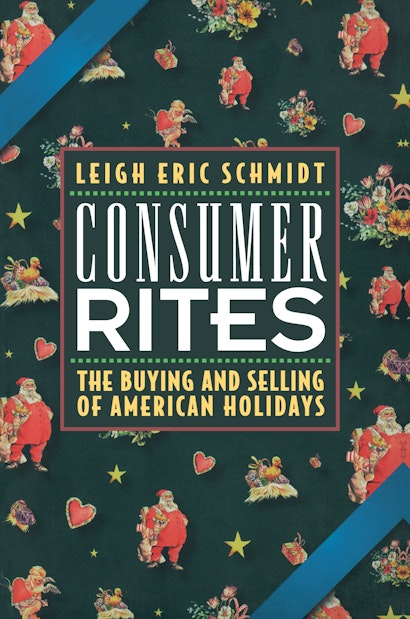Consumer Rites: The Buying and Selling of American Holidays


Paperback
- Price:
- $53.00/£45.00
- ISBN:
- Published:
- Nov 16, 1997
- Copyright:
- 1995
- Pages:
- 384
- Size:
- 6 x 9.25 in.
- 101 halftones
Slogans such as “Let’s put Christ back into Christmas” or “Jesus is the Reason for the Season” hold an appeal to Christians who oppose the commercializing of events they hold sacred. However, through a close look at the rise of holidays in the United States, Leigh Schmidt show us that commercial appropriations of these occasions were as religious in form as they were secular. The rituals of America’s holiday bazaar that emerged in the nineteenth century offered a luxuriant merger of the holy and the profane—a heady blend of fashion and faith, merchandising and gift-giving, profits and sentiments, all celebrations of a devout consumption. In this richly illustrated book, which captures both the blessings and ballyhoo of American holiday observances for the mid-eighteenth century through the twentieth, the author offers a reassessment of the “consumer rites” that various social critics have long decried for their spiritual emptiness and banal sentimentality.
Schmidt tells the story of how holiday celebrations were almost banished by Puritans and other religious reformers in the colonies but went on to be romanticized and reinvented in the nineteenth and twentieth centuries. Merchants and advertisers were crucial for the reimagining of the holidays, promoting them in a grand, carnivalesque manner, which could include gargantuan fruit cakes, masked Santa Clauses, and exploding valentines.
Along the way Schmidt uses everything from diaries to manuals on church decoration and window display to show in bright detail the ways in which people have prepared for and celebrated specific holidays—such as going Christmas shopping, making love tokens, choosing Easter bonnets, sending flowers to Mom, buying ties for Dad. He demonstrates in particular how women took the lead as holiday consumers, shaping warm-hearted celebrations of home and family through their intricate engagement with the marketplace. Bringing together the history of business, religion, and gender, this book offers a fascinating cultural history of an endlessly debated marvel—the commercialization of the American holidays.
Awards and Recognition
- Honorable Mention for the 1996 Ray and Pat Browne Award for Best Book in Popular Culture
